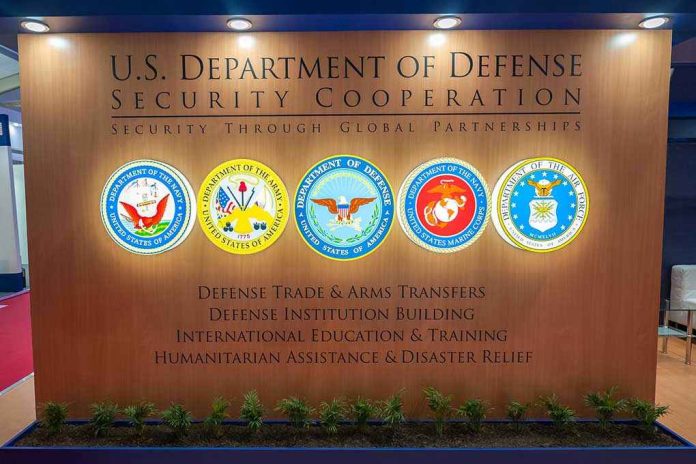
A legendary Marine One helicopter that once carried U.S. presidents now sits grounded, stripped of its wings but not its legacy, as it takes on a new—and frankly, much-needed—mission: keeping the next generation of Secret Service agents sharp, ready, and a whole lot less reliant on the government’s usual patchwork training solutions.
At a Glance
- The iconic VH-3D Marine One helicopter, decommissioned in 2023, is now a hands-on training tool at the Secret Service’s Rowley Training Center.
- After decades of presidential service, the aircraft replaces an ancient Navy chopper that was falling apart and barely useful for modern security needs.
- The transition reflects a rare, common-sense move to repurpose taxpayer assets instead of letting them rot or spending billions on new training equipment.
- For a change, the move boosts agent readiness and preserves a slice of American history, instead of wasting money or fueling another government boondoggle.
A Presidential Workhorse Finds a Second Life
The VH-3D Sikorsky helicopter, bearing the unassuming Bureau number 159358, started its career in 1976 under President Ford and spent nearly fifty years ferrying America’s top leaders—every president and vice president from the late ’70s onward. This aircraft, built tough for all-weather missions and loaded with every communication and defensive upgrade the Cold War could dream up, is no mere museum piece. After being retired in 2023 to make way for the new, and let’s be honest, wildly expensive VH-92 models, it was delivered this June to the Secret Service’s Rowley Training Center in Maryland.
The Rowley Center isn’t some government showpiece—it’s where agents get their hands dirty, prepping for the worst so they’re ready to protect the Commander-in-Chief on the move. For years, their “training helicopter” was a creaky 1963 Navy bird that was more suitable for a scrapyard than security drills. By finally installing a helicopter that agents might actually see in the field, the Secret Service has done what so many government agencies seem incapable of: using what’s already in the arsenal instead of crying for more taxpayer dollars.
Modernization That Actually Makes Sense
The new-to-them VH-3D isn’t just a shell. Its interior configuration matches the current operational Marine One, the VH-92 Patriot, giving trainees a realistic, up-to-date environment for drills. Agents can now run through complex boarding, evacuation, and defensive scenarios in a space that’s almost indistinguishable from the ones that shield the president today. No more pretending an obsolete hulk is “close enough.”
Deputy Special Agent in Charge Troy Sarria called the chopper a “historic artifact” and stressed how it will elevate hands-on, scenario-based training for presidential and vice-presidential details. The Secret Service’s investment in simulation doesn’t stop there—agents also train in a mock-up of “Air Force One Half” for airport operations, showing a rare commitment to making their preparation as close to reality as possible. This is the kind of practical, results-driven thinking we wish would infect the rest of Washington’s endless bureaucracy.
Preserving History Without Breaking the Bank
Let’s take a moment to appreciate the irony: after decades of endless spending sprees, a high-profile government agency finally finds a way to save money by repurposing instead of replacing. Instead of dumping millions into a new training tool or letting a piece of American history rot in a desert, the Secret Service has breathed new purpose into a machine that helped shape modern presidential security. This isn’t just good optics; it’s common sense, and about time.
The transition means agents are now training in an environment that looks and feels exactly like what they’ll encounter in the field, and taxpayers aren’t left holding the bag for unnecessary purchases. It also preserves a tangible link to a half-century of executive leadership, honoring the history of the office without another bloated, taxpayer-funded museum. Aviation and military buffs, who tend to appreciate responsible stewardship far more than government officials, can rest easy knowing this historic machine is still serving the country.





